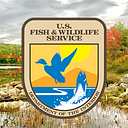Weathering the storm: piping plovers flock to Long Island beaches
If you live in the Northeast, you won’t soon forget 2012’s Hurricane Sandy. But there is one storm story you may have yet to hear.
Along some areas of the Long Island coast, strong winds and waves washed over the beaches, spreading out sand to create the sandy, open spaces that the island’s winged residents rely on for nesting. For biologists, the restored beach habitat was a sign of hope for the threatened piping plover, whose numbers had been precariously low in New York.
Researchers from Virginia Tech investigated the effects of Sandy on Long Island with the help of the U.S. Fish and Wildlife Service, the National Park Service, New York State Office of Parks, Recreation, and Historic Preservation, Suffolk County, and the U.S. Army Corps of Engineers. In comparing 2010 and 2015 plover habitat areas and population abundances, they found a substantial increase in suitable habitat and a modest population increase. Notably, more than half of the new habitat on Fire Island and Westhampton Island was created during the storm, with the rest of the habitat engineered by the Corps.
This increase in available habitat likely contributed to the 40.6 percent increase in plover population on Fire Island and Westhampton Island since the hurricane. This boost is a welcome addition for the bird, which faces numerous threats and is struggling to reach the goal of 575 pairs set out in the federal recovery plan. The researchers also found that the number of nesting pairs in the area has increased over the past 5 years, and they are optimistic that 2018 will be a year of continued productivity for the birds in the area.
Since piping plover chicks have to forage for themselves, plovers like to build nests on flat open beaches close to the shoreline where they have easy access to the tiny invertebrates that they feed on. By creating a number of new overwashes and breaches, Sandy helped expand the territory where plovers and their chicks can live, eat, and grow before their winter journey.
The reaction from the local plover population has been telling: among new and returning plovers at each beach in the study area, more than 80 percent chose the newly-created habitats to build their nests. And the new plovers exclusively nested in these new areas, completely avoiding the less favorable habitat that existed before Sandy’s contributions. The Hurricane Sandy beach redesign seems popular among the plovers.
This new habitat inches the birds one step closer towards recovery. But what the researchers call a “modest increase” in population is still a long way off from the desired plover population on Long Island. And since much of the newly created habitat is not in protected areas, only time will tell how long and how much the birds will really be able to enjoy these new spaces. To recover this species and others that depend on storm-generated habitat, we must look for solutions that balance shorebird habitat creation while protecting human infrastructure so that we can both weather the storm.

